Dans la discographie de Shack, il y a Waterpistol (le disque maudit), The Corner Of Miles And Gil (le disque jazzy), H.M.S. Fable (le disque gentil), Zilch (le disque produit par Broudie) et Here’s Tom With The Weather. Sur ce dernier, Mick Head est au firmament de son écriture. Coincées entre les Byrds et Forever Changes, les chansons de ce disque sont du niveau de celles des Strands. Here’s Tom With The Weather est aussi le disque où John Head se révèle et chante aussi bien que son frère.
En 2003, Shack est donc remis en selle par le promoteur de Take That et est soutenu par toute la jeune garde de Liverpool qui lui doit beaucoup (The Stands, The Coral).
Discographie
ShackRetour sur ce disque avec celui qui l’a produit et enregistré et celui qui a réalisé la pochette. Cette dernière a été faite grâce aux photographies de Harry Ainscough prises à Liverpool en 1965.
Jay Reynolds
Jay Reynolds a co-produit et enregistré cet album.
Comment as-tu rencontré le groupe ?
Jay Reynolds : J’ai rencontré le groupe quand ils sont venus aux studios Townhouse pour enregistrer et mixer HMS Fable. J’y étais ingénieur à cette époque et j’ai travaillé sur l’album avec Youth et Hugo.
Comment as-tu trouvé le son de cet album ? Il est fantastique.
Jay Reynolds : Merci. Il nous est venu pendant l’enregistrement aux studios Bryn Derwen dans le Nord du Pays de Galles. Le groupe voulait quitter sa ville et se concentrer sur l’enregistrement de l’album. Le budget était limité donc nous avons tout fait en 6 semaines. En incluant le mix ! Je pense que le son global a été dicté par la batterie. Elles sont jouées avec des Hot Rods et non des baguettes ainsi rien ne sonne trop lourd dans la production. Je ne suis pas sûr des raisons qui nous ont fait prendre cette direction. Je pense que Iain préférait jouer ainsi à cette époque. Cela un côté très acoustique, très aérien au disque. Autre chose : tout ce qui était enregistré l’a été avec les instruments que nous avions sous la main à Bryn Derwen. C’était un studio avec une maison et il y avait beaucoup d’instruments. Le groupe était vraiment fan d’Arthur Lee de Love. Nous avons visé ce son. Lors des quatre ou cinq semaines d’enregistrement, Mick s’est rendu compte qu’il avait oublié d’enregistrer Meant To Be. Je n’avais jamais entendu parler de cette chanson. Mick et John avaient été à la maison de l’arrangeur de cordes avant de commencer l’enregistrement de l’album et lui a joué toutes les chansons… J’ai été très surpris qu’elle fonctionne car il n’y avait aucune démo et c’était par conséquence difficile de la travailler. Donc la nuit avant d’enregistrer les cordes, nous avons enregistré Meant To Be.
Shack – Meant To Be
L’enregistrement a été facile ?
Jay Reynolds : Cela a pris six semaines, tout a été enregistré de manière live avec le groupe qui vivait près du studio. C’était un studio résidentiel, donc nous y avons tous séjourné. Le groupe passait tout son temps au pub du village et rencontrait les gens du pays la journée et la nuit. Je devais les rappeler quand j’en avais besoin. C’était agréable, mais j’avais besoin de garder sous la main car il y avait du travail. Mais ils aimaient boire donc ils disparaissaient au pub dès qu’ils le pouvaient. Il leur fallait beaucoup de temps pour revenir et souvent ils étaient trop ivres pour se concentrer sur l’enregistrement et pour que l’on puisse garder quelques choses de viable. Les chansons de John ont commencé comme « des idées » et il les a graduellement transformées en chanson au fur et à mesure. Il pouvait travaille des heures sur un solo de guitare et des jours sur les paroles. Je me souviens que le groupe ne s’entendait pas avec le bassiste. John a ré-enregistré certaines des lignes de basse en fonction de son style de jeu, en particulier sur Miles Apart.
Shack – Miles Apart
Une fois les morceaux enregistrés, nous les avons mixés. Il y a eu un seul mix. Le dernier jour, nous avons travaillé toute la nuit pour terminer les chants et le mix. Laurie, le propriétaire du studio, voulait fêter ça et faire un repas. Mais il restait beaucoup de travail et ce fut un vrai cauchemar. Il y avait des gens ivres partout, d’autres qui se battaient et certains donnaient leur opinion alors qu’il n’étaient pas en état. Le lendemain matin, je suis retourné à Londres avec les bandes et elles sont parties au mastering.
Quel est ton meilleur souvenir ?
Jay Reynolds : C’était très amusant, le groupe est très sociable. On a bu pas mal de coups et on a fait la fête pendant l’enregistrement. Nous avions un grand tableau sur le mur avec les choses à enregistrer et nous les cochions une fois que c’était fait. Le studio était dans une vieille maison de campagne, donc certains matins je me rendais au studio et je trouvais des canards sur le bureau de mixage.
Quelle est ta chanson préférée ?
Jay Reynolds : J’aime Byrds Turn to Stone, Meant To Be, Soldier Man. Nous avions enregistré une version d’As Long As I’ve Got You avec des cordes mais nous ne l’avons jamais utilisée. Avec le recul je le regrette. La version est quelque part mais je ne l’ai pas.
Shack – Byrds Turn To Stone
Te rappelles-tu des sessions de Chinatown ?
Jay Reynolds : Toutes les chansons ont été enregistrées sur la même période… Je ne m’en rappelle pas. C’était ta chanson préférée ?
Oui !
Pete Kelsey
Pete Kelsey est un graphiste anglais qui a notamment travaillé avec les Stone Roses, Ocean Colour Scene et Shack.
Comment as-tu rencontré le groupe Shack ? Via le label North Country ?
Pete Kelsey : Oui, j’ai commencé à travailler avec Jonathan Green et son label North Country en 2003 pour l’album solo de John Squire (The Stone Roses). On m’a ensuite demandé de travailler avec Shack.
Tu as travaillé avec The Stone Roses et Ocean Colour Scene. Tu étais un fan des The Pale Fountains et de Shack ?
Pete Kelsey : Je suis graphiste mais comme tu le sais probablement, j’ai aussi dirigé en partie MCA Universal de 1990 à 1998. J’ai donc travaillé avec Ocean Colour Scene et les Stone Roses mais j’ai toujours été un fan de rock indé. Je suis un grand fan des Pale Fountains. J’étais à l’université en 1985. From Across The Kitchen Table et Pacific Street font partie de mon ADN. J’ai acheté Zilch en 1987. J’avais perdu la trace du groupe et je les ai retrouvés avec HMS Fable. J’aime beaucoup ce disque. Il a été dans la playlist pour l’accouchement de ma femme. Comedy est la dernière chanson jouée avant que mon fils naisse. J’avais mon agence et c’était gratifiant de travailler avec des groupes avec qui j’avais grandi et qui s’opposaient à tout ce que j’avais fait avec Universal…
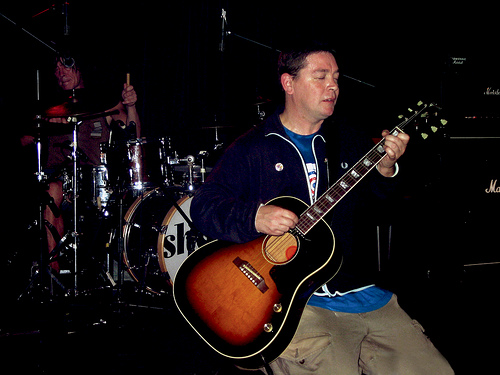
Pour toi, quelles sont les fonctions d’un graphiste ?
Pete Kelsey : La plupart des groupes ont une idée de ce qu’ils veulent. C’est alors notre travail de développer des concepts (et de nous en contenter). Une fois le travail de création terminé, il faut penser pour aux encarts publicitaires, aux affiches de concert…
As-tu travaillé avec le groupe ?
Pete Kelsey : J’ai rencontré le groupe pour la première fois dans les studios de Monmouth et nous nous sommes assez bien entendus. J’étais fan et il s’agit d’un groupe franchement sympa. C’était un peu difficile pour avoir leurs idées car ils n’avaient pas accès à Internet. Je me souviens que j’ai dû envoyer un fichier Pdf sur la boîte mail de la bibliothèque municipale de Liverpool et appeler Mick ou John pour les prévenir que le mail était arrivé. Nous nous sommes rencontrés à quelques reprises, notamment pendant leurs concerts (ou avant) et je leur montrais le progrès de tous les dessins sur lesquels je travaillais. C’était très facile de travailler avec eux.
Qu’as tu voulu montrer avec le design de ce disque ? Pourquoi as-tu utilisé la couleur rouge ? Et pourquoi t’es-tu servi des clichés du photographe Harry Ainscough ?
Pete Kelsey : Le groupe avait réperé des photographies. J’ai dû les retrouver et négocier les droits d’utilisation avec la famille Ainscough. Le titre est une citation d’un sketch de comédie de Bill Hicks. Je pense que le rouge a été inspiré par Time Magazine. Cela correspondait bien avec le traitement sépia de la photographie utilisée pour la pochette (l’originale est noir et blanc). Nous avons utilisé une série d’images de ce cher Harry Ainscough avec le même traitement de couleur pour les singles suivants. Nous devions avoir un ensemble cohérent pour la promotion du disque.
Shack - ... Here's Tom With The Weather
… Here’s Tom With The Weather de Shack est disponible via North Country.
Michael Head and The Red Elastic Band publieront en 2017 l’album Adios Senor Pussycat< via Violette Records.
Retrouvez les articles liés à Shack et aux Pale Fountains :
- Love Shack !
- Le jazz secret de Mick and John
- 30 years from across the kitchen table
- Michael Head and The Strands – The Magical World of the Strands
- As Long As I've Got You
- Soldier Man
- Byrds Turn To Stone
- Carousel
- On The Terrace
- Miles Apart
- Meant To Be
- The Girl With The Long Brown Hair
- On The Streets Tonight
- Chinatown
- Kilburn High Road
- Happy Ever After
English text
Jay Reynolds
How did you meet the band ?
I met the band when they came to The Townhouse Studios to record and mix HMS Fable. I was an in-house engineer at the time and worked with Youth and Hugo on the album.
How did you find the sound of this album ?
Thanks, It came together during the recording process at Bryn Derwen Studios in North Wales. The band wanted to get out of the city to concentrate on recording this album, there was a limited budget, so we did it all including mixing in 6 weeks.
I think the overall sound we dictated by the drums being played on Hotrods and not sticks, so nothing sounded heavy or loud in the production. I’m not sure why we did it that way, I think Iain the drummer preferred to play them at that time, but it really gave the whole album an acoustic, breezy feel.
Otherwise, everything else recorded was what we had to hand at Bryn Derwen. It was a residential studio and had loads of it’s own instruments to play with. The band were really into Arthur Lee of Love so we aimed at that sound.
I remember 4 or 5 weeks into the recording time, the day before we were due to record the strings, Mick said “I forgot, we haven’t recorded Meant To Be”. I’d never heard of the song until then. Mick and John had been to the string arranger’s house before we started recording the album and played her all the songs, to which she scored all the fantastic strings. I was amazed it worked out as there were no demos to speak of so it could easily of not worked at all. So the night before recording the strings, we recorded Meant To Be.
How easy was the recording process ? How long did it take you ?
It took 6 weeks, everything was recorded live with the band set up around the studio. It was a residential studio, so we all stayed there all the time, it was long hours. The band used to head out to the village pub and hang out with the locals throughout the day and night, I’d just call them back when I needed them. It was enjoyable, but I needed to keep on top of the workload as they liked to drink and would disappear out to the pub whenever they could. It would take them a long time to come back and often they were too drunk to concentrate on recording anything worth keeping. John’s songs started as ideas and he gradually turned them into finished songs as we recorded so we could be working on a particular guitar solo for hours at a time or working out a vocal melody over a few days.
I remember the band not getting on with Guy the bass player after a few weeks, so John re-recorded some of the bass lines to suit his style of playing, especially on Miles Apart.
Once the tracks were recorded, they were only ever mixed once. On the last day we worked all night finishing vocals and mixes. Laurie, the studio owner, wanted to have a last night meal/party, but there was so much left to do it just turned into mayhem with drunk people everywhere, fights going on, random people in the studio giving opinions. The next morning I drove back to London with the finished tapes, straight to the Mastering suite and that was it….done.
What’s your best memory about this recording process ?
It was all good fun, the band are very social, so there was always plenty of drinking and partying outside the studio that spilled over into the recording process. We had a big chart on the wall with things to record, so we would tick things off as we went.
The studio was in an old country house, so some mornings I’d go round to the studio and find ducks on the mixing desk…
What’s your favorite of this album ? Why ?
I like Byrds Turn to Stone, Meant To Be, Soldier Man. We actually recorded strings on As Long As I’ve Got You, but we never used them. Looking back I regret that, I think there’s a version with them on somewhere, but I don’t have it.
Do you remember the sessions of Chinatownn ?
All the tracks were recorded at the same time, so nothing different comes to mind. Is that your favourite song?
Pete Kelsey
How did you meet Shack ? Via the label North Country ?
Yes, I started working with North Country (Jonathan Green) in 2003 on the John Squire solo album project and following that I was asked to work with Shack.
You worked with The Stone Roses and Ocean Colour Scene. Are you a fan of The Pale Fountains & Shack ?
As you probably know I was a designer, then Head of Art at MCA Universal from 1990 until 1998 and at that time got to work on bands signed to the labelincluding Ocean Colour Scene and The Stone Roses but I was always a fan of Indie music. I was a big Pale Fountains fan, I was at University in 1985 andboth From Across The Kitchen Table and Pacific Street were part of my soundtrack at that time. I remember buying the first Shack album ‘Zilch’ on vinyl in 1987 I think but lost track of the band after that until HMS fable which is an album I love. I made a playlist to play in the hospital whilst my wife was in labour with our fist son and ‘Comedy’ was the last song played before his birth. By then I had set up my studio so it was very rewarding to get commissions
from bands I’d grown up with as oppose to just what was signed to the label I was working for.
What was your job/your mission as designer ?
Most bands have some idea of what they want so it’s our job to just liase with them in terms of developing the concepts. Once the creative work is done
then the job is mainly creating all the publicity assets such as posters, ads and marketing materials and distributing these. We always work pretty closely
with a photographer, often nominated by the band, although I don’t recall this being the case with Shack.
Did you work with the band ?
I met the band first in the studio in Monmouth and we got on well, I was a fan and they are pretty friendly guys so it worked out well. It was a bit tricky
to get the ideas together as none of them were online at that stage. I recall I had to send a pdf to the central library in Liverpool and then call Mick or
John and tell them to collect the email. We met a few times, mainly at or before gigs and I would show them progress of any designs I was working on.
They were always great to work with, very easy.
What did you want to do with the design of this LP ? What did you use the red color ? And why did you use the pictures of Harry Ainscough ?
The photos the band had seen so I just had to track them down and negotiate the usage rights from the Ainscough family. The title is a quote from a
Bill Hicks comedy sketch. I think the red was inspired by Time Magazine, and it keyed in well with the sepia treatment on the cover image (the original
is black and white). We used a series of Harry Ainscough images with the same colour panel treatment for the subsequent singles so it makes a coherent set which I always tried to do with an album campaign.

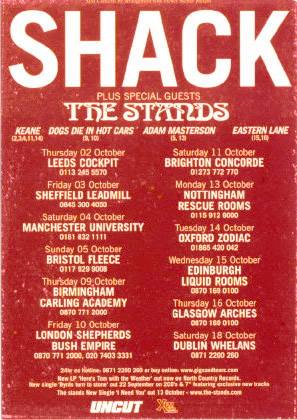
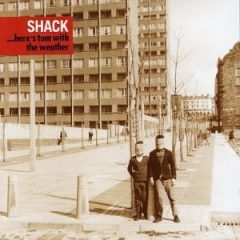
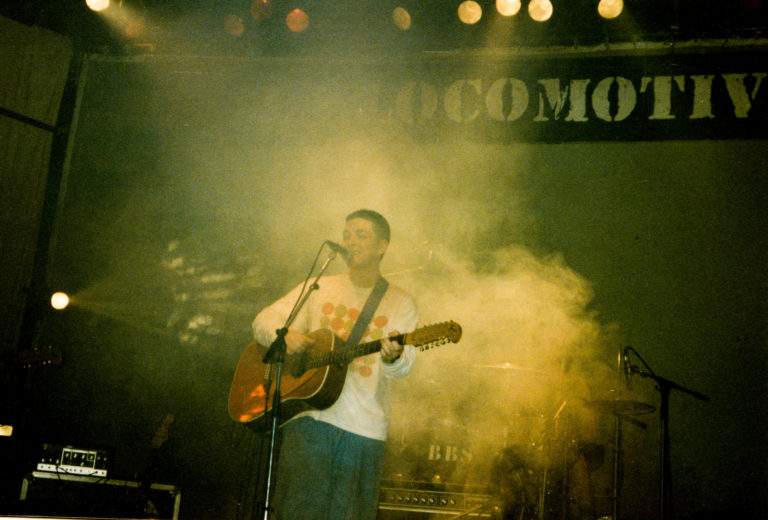
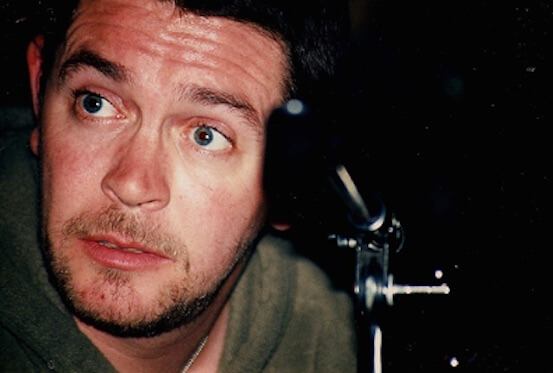
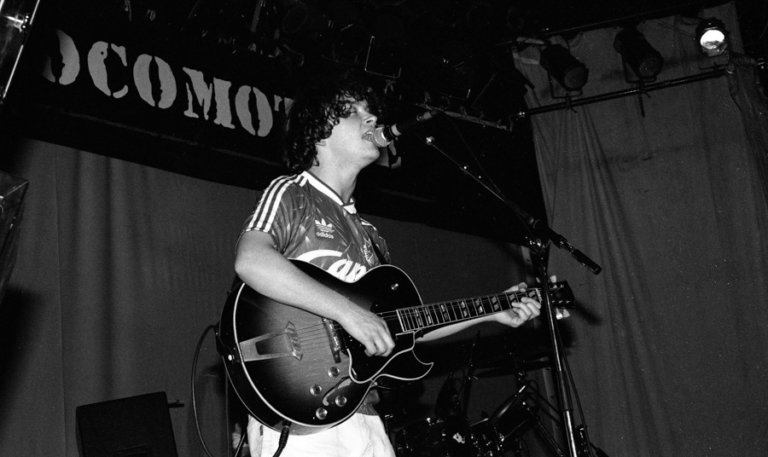
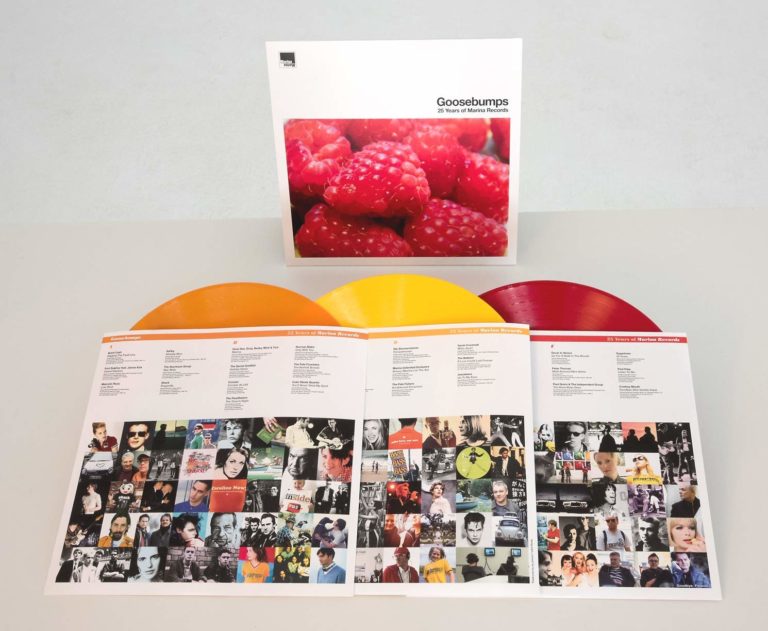
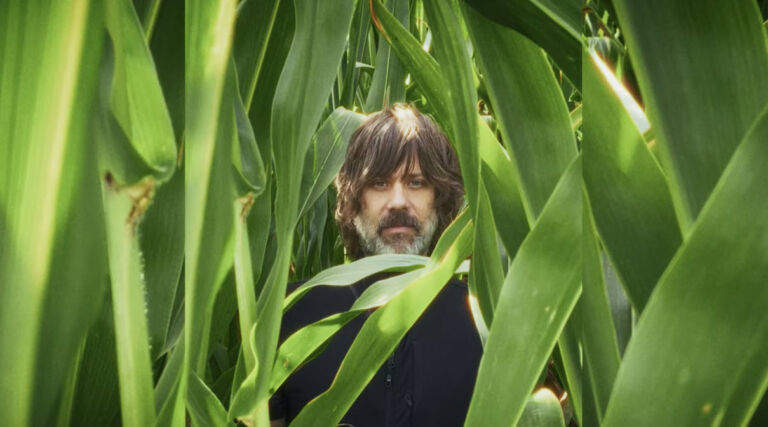
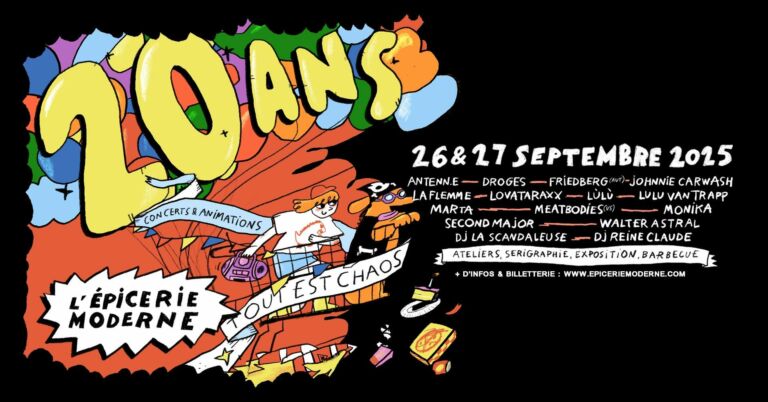
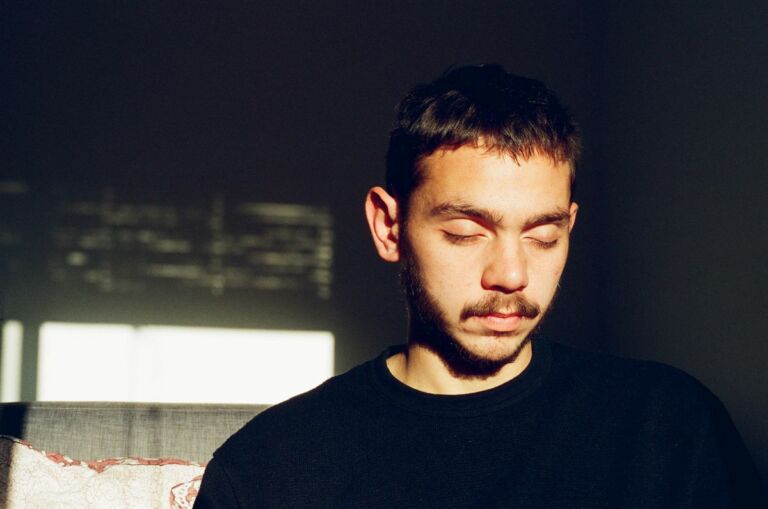
 5 questions à … Cocoon
5 questions à … Cocoon 5 questions à… Holy Two
5 questions à… Holy Two